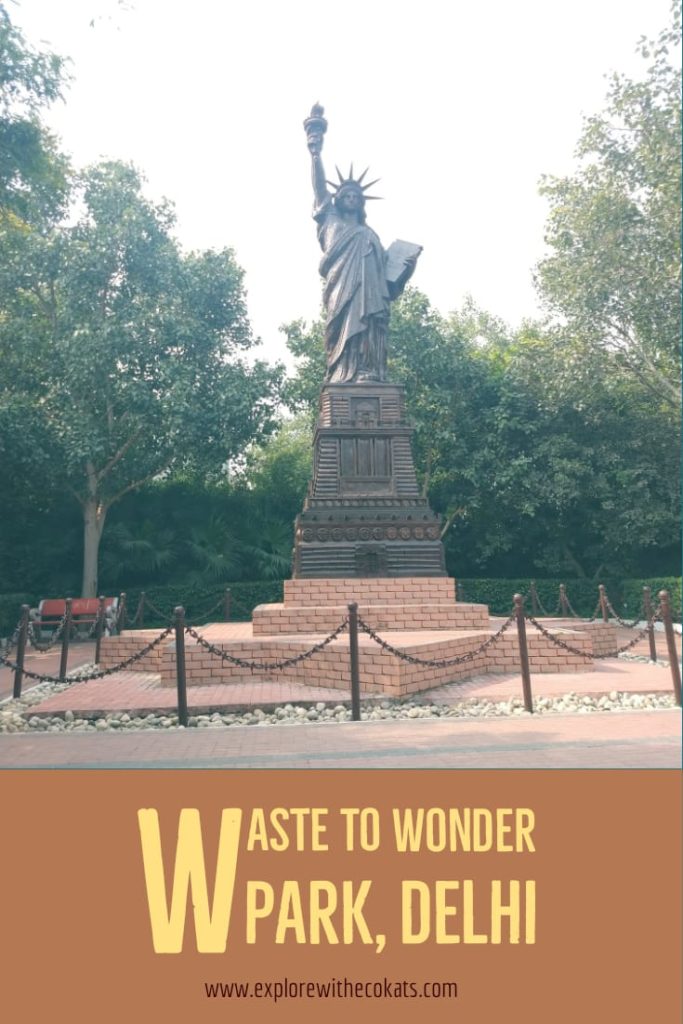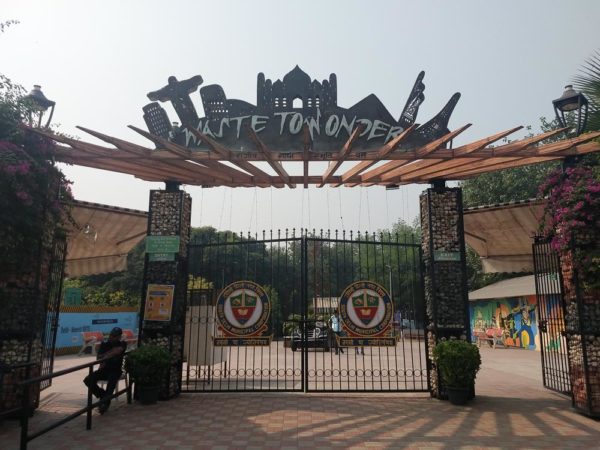Last Updated on March 11, 2023 by
Wondering about offbeat places to visit in Delhi? The city that has architectural marvels also has Waste to Wonder Park, Delhi, a sustainable tourist place in Delhi.
While I was deciding on my Delhi Travel Guide, I came to know about Waste to Wonder Park. The park is made from different types of Waste, much like the Chandigarh Rock Garden. It was the first for me and I was surely excited to visit the Waste to Wonder Park.
Table of Contents
Why the name Waste to Wonder Park?
This tourist attraction is an ode to the seven wonders of the world. The Waste to Wonder Park has installed replicas of seven iconic edifices using waste scrap. The seven wonders recreated here are pieces of art as the waste is perfectly aligned to give respect to the original structures.
About Waste to Wonder Park
Spread across 5 acres of land, Waste to Wonder Park is a sustainable place in Delhi. The sculptures are constructed away from each other and a well-laid path directs visitors to each one of them. The entire area is full of flowering shrubs, manicured gardens and trees giving it a feeling of must visit parks in Delhi.
The South Delhi Municipal Corporation (SDMC), the governing body behind the construction of Waste to Wonder park has utilized over 150 tonnes of industrial and automobile waste to develop and build the 7 wonders of the world sculptures in the park.
The park is sustainable in many ways and not just the installation of structures. Waste to Wonder park is eco-friendly as it consists of 3 windmills (worth 1 KW), 3 solar trees (worth 5 KW) and a rooftop solar panel of 10 KW. This park is self-sufficient for running on its renewable energy.
Seven wonders of the world whose miniature replicas are present at Waste to Wonder Park are Taj Mahal, Agra, India, Great Pyramid of Giza, Eiffel Tower of Paris, Leaning Tower of Pisa, Christ the Redeemer Statue of Rio De Janeiro, Rome’s Colosseum and the Statue of Liberty, USA.
The replicas of these seven wonders made out of waste have been given a bright and finished look with old sodium lights installed within them, to highlight their features.
The park was made a reality thanks to five artists, seven supporting artists and 70 welders.
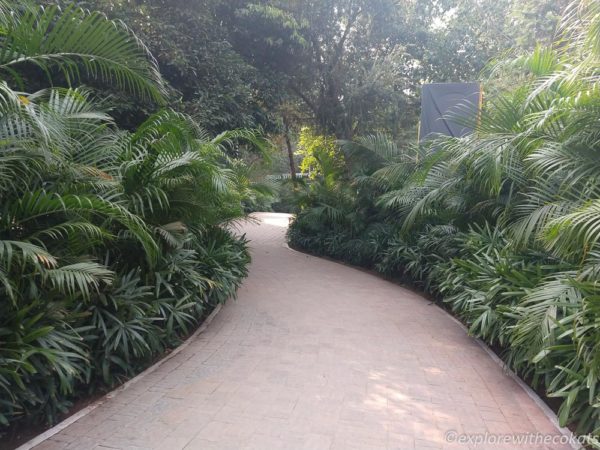
Details about the structures at Waste to Wonder Delhi
After the entry into the main gate, visitors are greeted with a photo-op of a vintage car. Visitors have to follow a trail to reach the first replica. There are details about each sculpture as a display board that notifies visitors on what is used. At the end of the 7th wonder, there is a cafe where one can enjoy local delicacies and fast food.
Pyramid of Giza
The Pyramid of Giza is 18 feet high and 10 feet wide. Around 110 layer structure has been generated by using 10,800 scrap angles. This sculpture has utilized 10 tonnes of waste material.
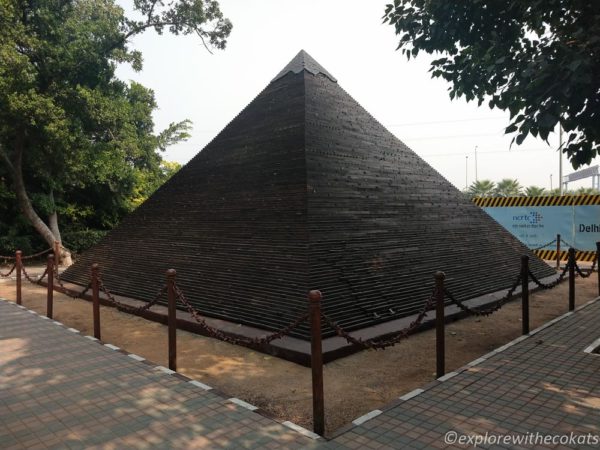
Leaning Tower of Pisa
The leaning tower of Pisa is 39 feet high and 10 feet wide and has been given the exact tilt of 86 degrees. It has been constructed out of waste such as cable wire wheels, automobile parts, typewriter parts, truck metal sheets, clutch plates, C channels and angles. It has 182 columns that are made of pipes and automobile gears. This sculpture has utilized 9 tonnes of waste and took 100 days to complete.
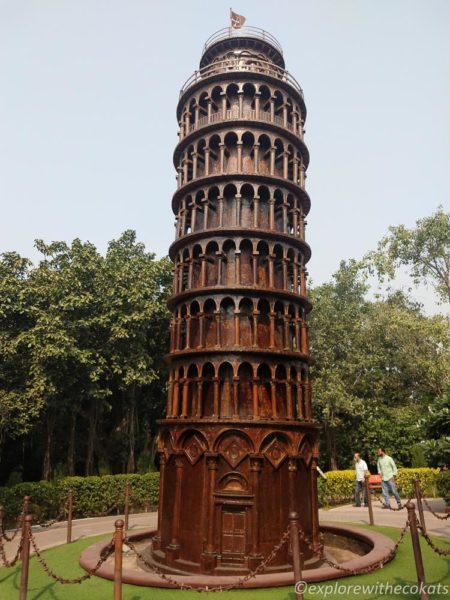
Eiffel Tower
The Eiffel Tower is 70 feet high and 27 feet wide. The materials used in making this replica are truck petrol tanks, automobile parts, garden railing parts, clutch plates, C channels and 3”, 4”, 5” angles. This sculpture utilized 15 tonnes of waste and took 130It totally gives the real Parisian feel by visiting here. I can say so because I have seen the real one. Check my 3 days Paris guide: Paris highlights for first time visitors.
Colosseum
The Colosseum at Waste to Wonder Park, Delhi is 16 feet high and 49 feet in length. The Colosseum has utilized scraps from children’s parks such as slides, swings and see-saw. Other materials used are gears, angles, square metal pipes, electric poles, automobile spare parts, metal railings, sheets of trucks and meta benches. There are 162 pillars and the arch of each pillar is made from 410 car wheels. This not-so-miniature sculpture has utilized 11 tonnes of waste scrap and was made in 100 days.
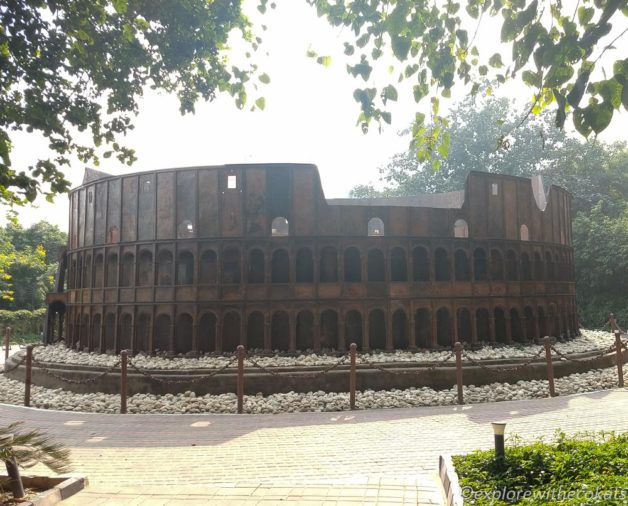
Taj Mahal
Taj Mahal is special for every Indian as it has put India on the global map. The replica of Taj Mahal in the park has utilized enough space for a small garden and fountains just like in the original one.
This sculpture is 37 feet high and 43 feet wide. It has utilized materials such as angles, trucks, cupboard sheets, nuts and boils, cycle tyre rims, electric pole pipes, park benches, children swings, old utensils like cooking kadhais and benches.
The Taj Mahal sculpture used 16 tonnes of scrap and took 130 days to complete.
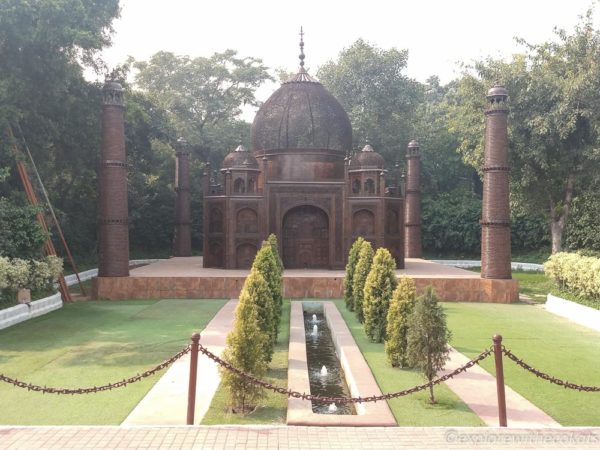
Christ the Redeemer
This sculpture is 25 feet high and 9 feet wide. It has utilized scraps such as electric pipes, automobile scrap, bike chains, spring, hand cart, auto-rickshaw parts, park benches, angles and gears. This sculpture at Waste to Wonder park utilized 15 tonnes of waste and was made in 130 days.
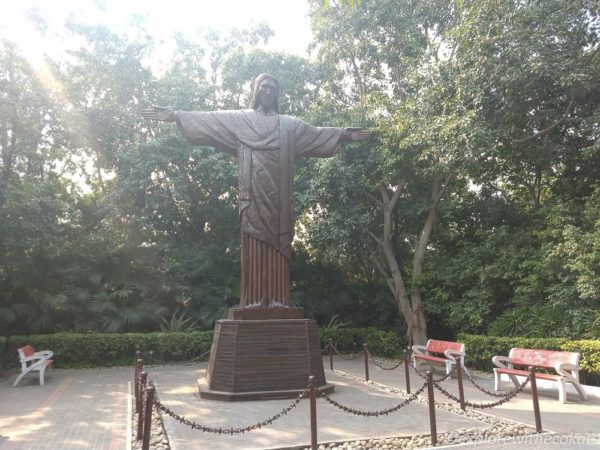
Statue of Liberty
The Statue of Liberty is 32 feet high and 17 feet wide. It is one of the most popular sculptures in the park. It has utilized angles from auto-rickshaw, slides from children’ park, tea stall, park benches, hand cart, electric metal wires, metal sheets, cycle chains and bike rims. This statue has utilized 4 tonnes of waste and was made in 90 days flat.
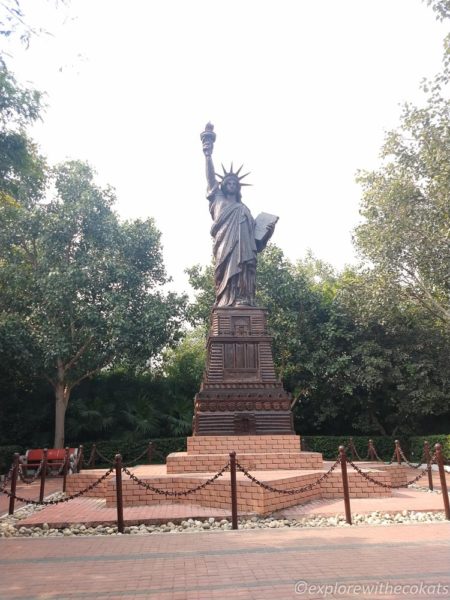
Location of Waste to Wonder Park
The miniature versions of the 7 Wonders of the World made with recycled scraps from landfill sites are located at Block A, Ganga Vihar, Sarai Kale Khan, New Delhi.
Nearest metro to Waste to Wonder Park
Hazrat Nizamuddin Metro Station on the pink line of Delhi Metro.
Waste to Wonder Entry Fee
Waste to Wonder ticket price is INR 50 for adults. It is free for children below 3 years of age and senior citizens above 65 years of age. For 3 to 12 years the entry fee is INR 25.
Waste to Wonder Park Timings
The park is open from 11 am to 11 pm. It is closed on Mondays.
Best time to visit Waste to Wonder Park
The best to visit Waste to Wonder is in the evenings during summer as it is pleasant and the park and sculptures are lit up. In winters the best time is in the afternoon by soaking up some sun.
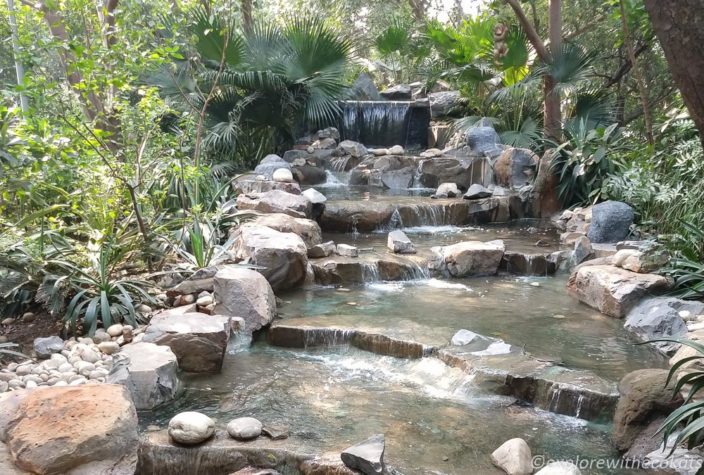
Places to visit near the park
Humanyun’s tomb
Humayun’s Tomb is the Mughal Emperor Humayun’s Mausoleum. It is one of the earliest examples of the garden tomb characteristic of Mughal-era architecture.
Sunder Nursery
It is a green space spread in a 90-acre land that includes a garden, a nursery & a historic tomb.
Sustainable tips for Waste to Wonder Park, Delhi
- Respect the sculptures by not touching/sitting on them. Do not cross the fence that protects the structure.
- Do not harm the sculptures by carving, writing or spitting on it.
- Do not pluck flowers from the garden.
- Dispose of garbage in the dustbins located at specific points.
Read more Delhi posts here:
Wondering about weekend trips from Delhi to the mountains? Here are some great options:
Like Sustainable places? Check out some innovative International Places following Sustainable Tourism:
- Laos: Sustainable Tourism in Luang Prabang
- Thailand: Nakhon Phanom Things to do
- Netherlands: NDSM Wharf
Disclaimer – This post contains affiliate links. It means it adds no extra cost to you if you book through the link but I get a referral bonus which helps me earn a little to keep this website up and running. Read about my Privacy Policy.
Pin this post!
